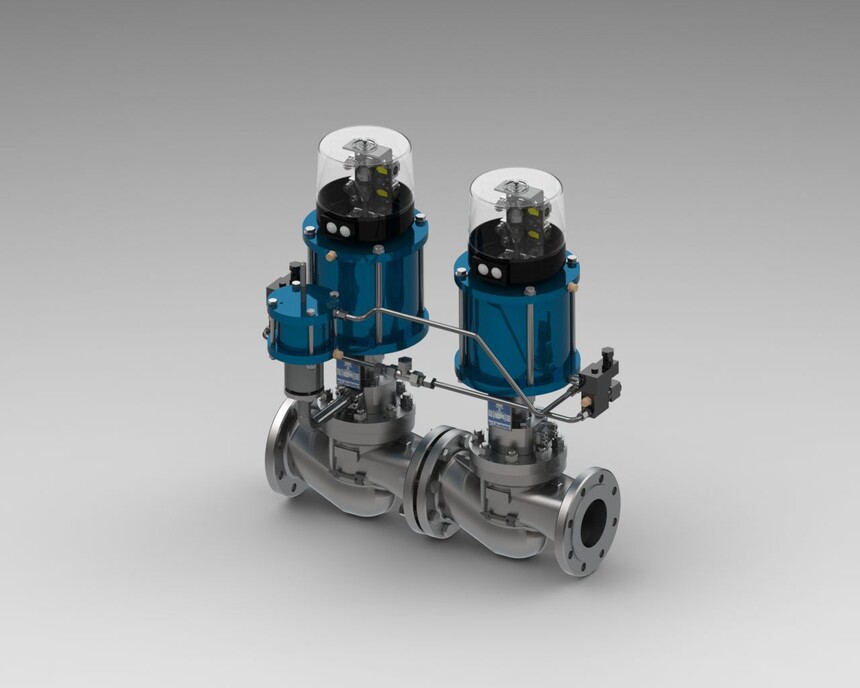|
Ensuring Regulatory Compliance with Offshore Valve InstallationsOffshore oil and gas exploration and production operations are subject to a myriad of regulations designed to ensure the safety, environmental protection, and operational integrity of these activities. Among the critical components in these offshore installations are valves, which play an indispensable role in controlling the flow of fluids, isolating sections of the pipeline, and ensuring the overall safety of the operation. This article delves into the importance of regulatory compliance for offshore valve installations, exploring the standards that govern these processes, the challenges faced, and best practices for achieving and maintaining compliance.
The Importance of Regulatory Compliance Regulatory compliance is not just a legal obligation; it's a cornerstone of safe and responsible offshore operations. Non-compliance can lead to severe consequences, including fines, operational shutdowns, environmental damage, and harm to personnel. For offshore valve installations, adherence to regulations ensures that valves are appropriately selected, installed, maintained, and operated to meet safety and performance standards. Key Regulations and Standards Several international and regional regulations and standards govern offshore valve installations. These include but are not limited to: 1. International Maritime Organization (IMO) regulations, particularly the International Convention for the Prevention of Pollution from Ships (MARPOL). 2. American Petroleum Institute (API) standards, such as API 6D for pipeline valves. 3. National Association of Corrosion Engineers (NACE) standards, focusing on materials and corrosion control. 4. ISO standards like ISO 15848-1, which deals with topside valves for subsea applications. 5. Local regulations from countries where offshore operations are conducted, often aligned with international standards but with specific local requirements. Challenges in Achieving Compliance Ensuring compliance with these regulations presents several challenges: Complexity of Regulations: The overlap and sometimes conflicting nature of different regulations can make compliance complex. Environmental Conditions: Offshore environments pose unique challenges due to harsh weather conditions, deep waters, and remote locations, affecting both installation and maintenance. Technological Advancements: Keeping up with technological advancements and integrating new technologies while maintaining compliance is a continuous challenge. Training and Expertise: Ensuring that personnel are adequately trained and possess the necessary expertise to understand and implement regulations is crucial. Best Practices for Compliance To overcome these challenges and ensure regulatory compliance in offshore valve installations, the following best practices are recommended: 1. Thorough Planning and Design: Begin with a comprehensive understanding of all applicable regulations and incorporate them into the design phase of the project. Use software tools for compliance management to keep track of requirements. 2. Quality Control: Implement stringent quality control measures during manufacturing, installation, and commissioning. This includes third-party inspections and certifications where required. 3. Continuous Training: Invest in continuous training programs for personnel involved in offshore operations to ensure they are up-to-date with the latest regulations, standards, and best practices. 4. Regular Maintenance and Inspections: Develop a robust maintenance schedule and conduct regular inspections to identify and address potential issues before they lead to non-compliance or failures. 5. Documentation and Record-Keeping: Maintain detailed documentation and records of all aspects of valve installations, including design specifications, inspection reports, maintenance logs, and incident reports. This documentation is crucial for audits and demonstrating compliance. 6. Collaboration and Communication: Foster collaboration among all stakeholders, including regulators, contractors, and suppliers, to ensure a shared understanding of compliance requirements and facilitate smoother implementation. Conclusion Ensuring regulatory compliance in offshore valve installations is a multifaceted endeavor that requires a proactive approach, continuous learning, and a commitment to safety and environmental stewardship. By adhering to relevant regulations and standards, overcoming the associated challenges, and implementing best practices, offshore operators can mitigate risks, avoid penalties, and contribute to the sustainable development of the offshore oil and gas industry. |

